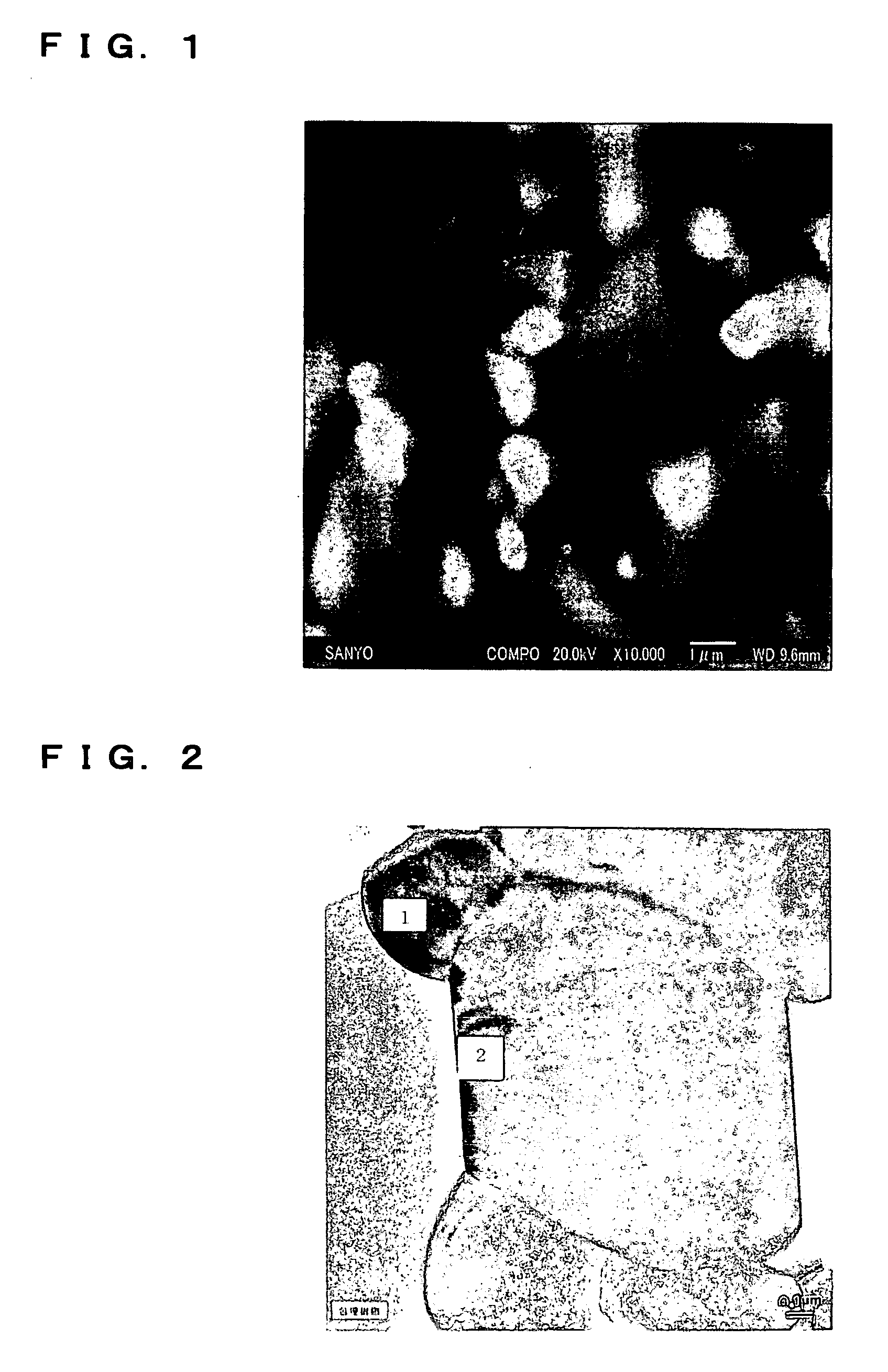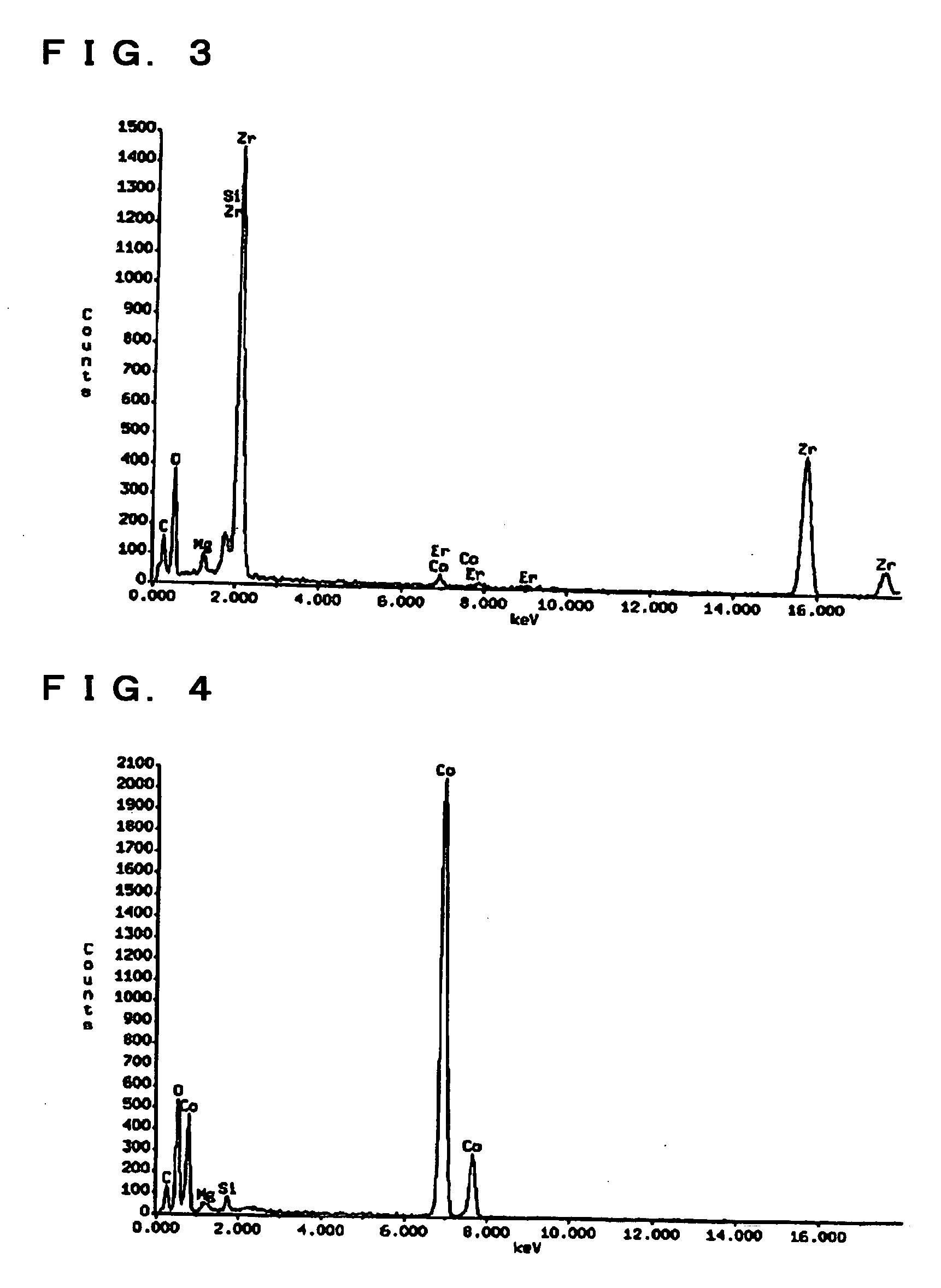Non-aqueous electrolyte secondary battery
- Summary
- Abstract
- Description
- Claims
- Application Information
AI Technical Summary
Benefits of technology
Problems solved by technology
Method used
Image
Examples
experiment 1
Example 1
[Preparation of LiCo0.993Zr0.002Mg0.005O2]
[0044] Li2CO3, Co3O4, ZrO2 and MgO were mixed in an Isikawa type grinding mortar in such a way that a molar ratio of Li, Co, Zr and Mg is 100:99.3:0.2:0.5 and then heat treated at 850° C. for 24 hours in an air atmosphere, and then the heat treated mixture was milled to obtain LiCo0.993Zr0.002Mg0.005O2 having an average particle diameter of about 14 μm.
[Preparation of LiMn0.33Ni0.33Co0.34O2]
[0045] LiOH and coprecipitation hydroxide expressed by Mn0.33Ni0.33Co0.34(OH)2 were mixed in an Isikawa type grinding mortar in such a way that a molar ratio of Li and overall transition metals is 1:1 and then heat treated at 1,000° C. for 20 hours in an air atmosphere, and then the heat treated mixture was milled to obtain LiMn0.33Ni0.33Co0.34O2 having an average particle diameter of about 5 μm.
[Preparation of Positive Electrode]
[0046] LiCo0.993Zr0.002Mg0.005O2 and LiMn0.33Ni0.33Co0.34O2 thus obtained were mixed in an Isikawa type grinding...
example 2
[0052] Anon-aqueous electrolyte secondary battery A2 was fabricated by following the same procedure as in Example 1 except for changing the procedure in the above preparation of electrolyte solution in Example 1 in such a way that VC, VS and 1,4-butanedioldimethanesulfonate (BDDMS) were added to the solution in the proportions of 2.0 parts by weight, 0.3 parts by weight and 1.0 parts by weight, respectively, with respect to 96.7 parts by weight of the solution and dissolved therein, and the charge-discharge cycle characteristic of the battery A2 was evaluated. The results of evaluation are shown in Table 1.
reference example 1
[Preparation of LiCo0.99Zr0.005Mg0.005O2]
[0056] Li2CO3, Co3O4, ZrO2 and MgO were mixed in an Isikawa type grinding mortar in such a way that a molar ratio of Li, Co, Zr and Mg is 100:99:0.5:0.5 and then heat treated at 850° C. for 24 hours in an air atmosphere, and then the heat treated mixture was milled to obtain LiCo0.99Zr0.005Mg0.005O2 having an average particle diameter of about 14 μm.
[Preparation of LiMn0.33Ni0.33Co0.34O2]
[0057] LiOH and coprecipitation hydroxide expressed by Mn0.33Ni0.33Co0.34 (OH)2 were mixed in an Isikawa type grinding mortar in such a way that a molar ratio of Li and overall transition metals is 1:1 and then heat treated at 1,000° C. for 20 hours in an air atmosphere, and then the heat treated mixture was milled to obtain LiMn0.33Ni0.33Co0.34O2 having an average particle diameter of about 5 μm.
[Preparation of Positive Electrode]
[0058] LiCo0.99Zr0.005Mg0.005O2 and LiMn0.33Ni0.33Co0.34O2 thus obtained were mixed in an Isikawa type grinding mortar so as ...
PUM
 Login to View More
Login to View More Abstract
Description
Claims
Application Information
 Login to View More
Login to View More - R&D
- Intellectual Property
- Life Sciences
- Materials
- Tech Scout
- Unparalleled Data Quality
- Higher Quality Content
- 60% Fewer Hallucinations
Browse by: Latest US Patents, China's latest patents, Technical Efficacy Thesaurus, Application Domain, Technology Topic, Popular Technical Reports.
© 2025 PatSnap. All rights reserved.Legal|Privacy policy|Modern Slavery Act Transparency Statement|Sitemap|About US| Contact US: help@patsnap.com


